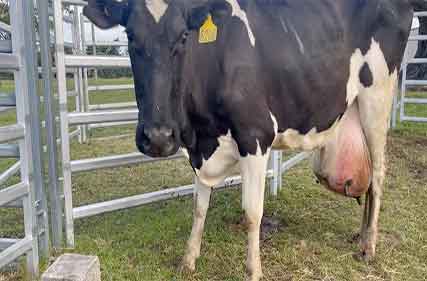 With the muddy conditions from the floods and the ongoing wet conditions, producers need to be aware of an increased risk of mastitis in their cows.
With the muddy conditions from the floods and the ongoing wet conditions, producers need to be aware of an increased risk of mastitis in their cows.
Agriculture Victoria Dairy Industry Development Officer Richard Smith said cows standing in wet paddocks and moving through muddy and damaged laneways have an increased risk of mastitis.
“There are a number of simple things farmers can do to manage the risk of mastitis developing in their cows, including maintaining good hand hygiene when milking and ensuring teats are clean before and after milking.”
Mr Smith said adopting the following simple practices will assist farmers in managing the risk of mastitis developing and spreading in the current conditions:
Wash and dry all teats before cups go on.
- Use a low-pressure, high-volume water supply combined with manual cleaning.
- Ensure milkers wear gloves.
- Dry with paper towels.
Strip cows every day to detect, treat and isolate clinical cases.
- Make daily quarter stripping a routine.
- Always wear gloves and avoid getting milk on your hands.
- Check clinical cases at next milking.
Cover all surfaces of all four teats with teat disinfectant. Healthier skin is easier to keep clean.
- Try and keep teats clean for at least an hour after the cows leave the milking shed.
- Keep the area immediately outside the dairy exit as clean as possible.
- Have feed available when cows leave the shed. This could be on a feed pad. Ensure this area can be scraped to reduce mud and manure build up.
Talk to your milk quality adviser, veterinarian or dairy factory field officer to adapt these steps to your farm situation.
More information on managing and treating mastitis is available on the Dairy Australia website.
-Agriculture Victoria
